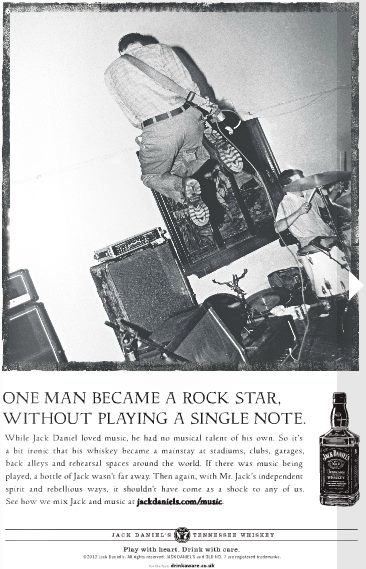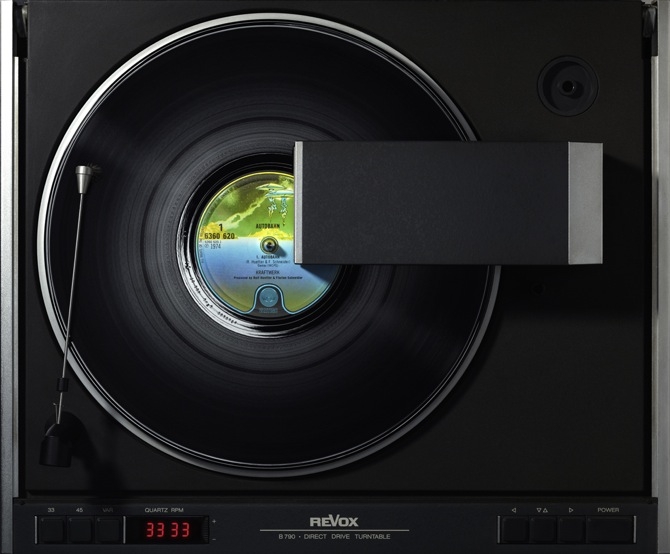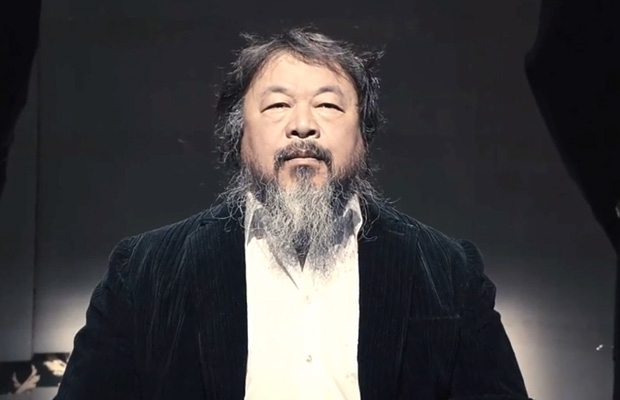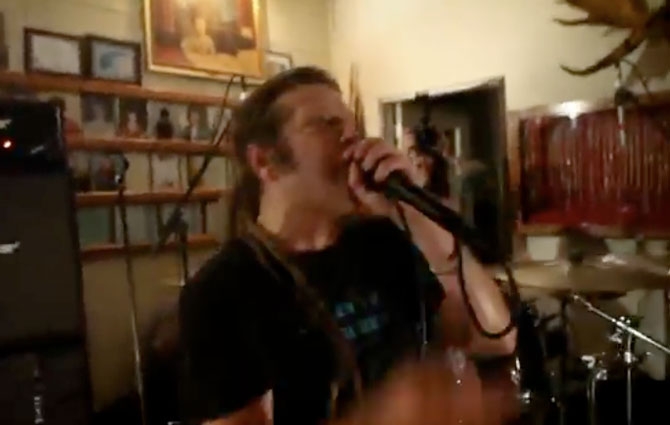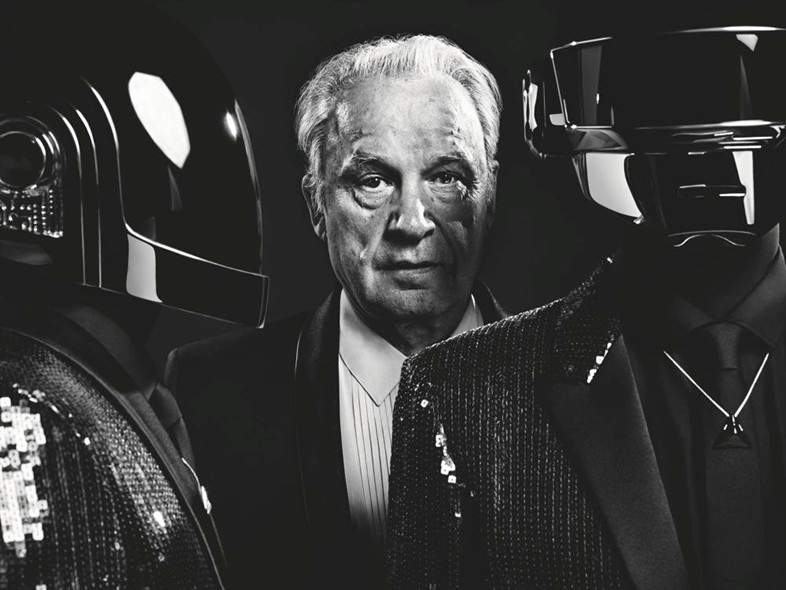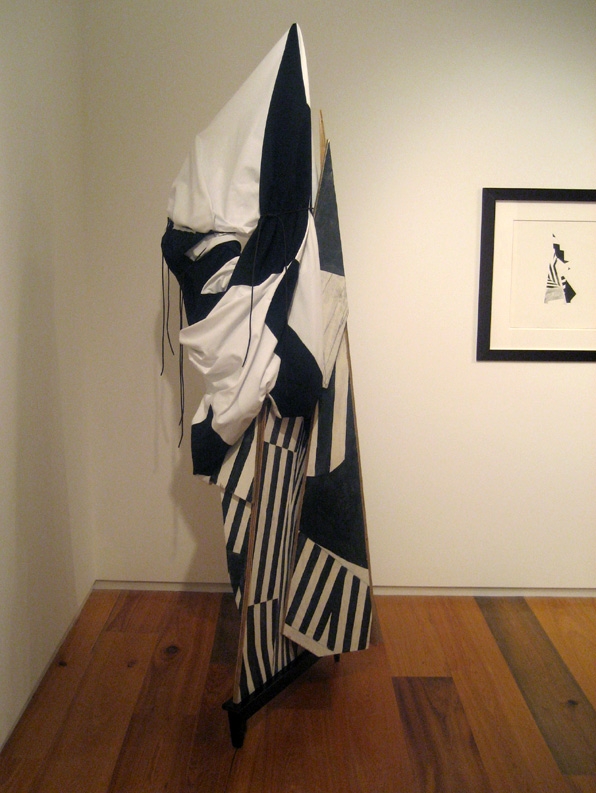In recent years, we've seen many unsung or short-lived indie and punk acts of the '90s get new Internet-age respect, with online interest plus reissues and reunions feeding the fire. Universal Order of Armageddon, an East Coast post-hardcore act from the early '90s, for example, reunited in 2011 for a series of gigs and a Chaos in Tejas festival set. Yesterday, however, the band realized it was getting attention of a different kind when guitarist Tonie Joy was informed that a live performance photo of UOA had been used in a Jack Daniel's ad in the UK. Joy shared the image on his Facebook page where NoMa heard about it. Joy declined to comment on the situation. We're simply left wondering how it happened and if perhaps, this is one among many appropriations to come from the '90s—a cultural era that has a surprisingly high level of cachet at the moment.
A classic vinyl record spinning on a handsome vintage turntable conjures all kinds of memories—often of the first time we heard the music itself. German photographer Kai Schäfer plays with these memories and associations in his "World Records" series. He began shooting Led Zeppelin IV a few years back, and has since shot more than a hundred records (from London Calling to Harvest) on more than 25 different vintage turntables (Dual, Braun, B&O).
Wired reports that Schäfer uses a Hasselblad camera with a Phase One digital back and a special flash, then makes enormous prints that can be six feet wide. His rules for the records? First or second pressings from the artist's native country shot on a turntable that would have been similar to one available at the time of the record's release. He often rents the vinyl or turntables for audiophiles in Düsseldorf, but has popped for collectables, such as a $650 copy of Elvis's "Mystery Train" single on Sun.






Bryan Ray Turcotte, founder of Kill Your Idols which published the authoritative volume on punk flyers, Fucked Up + Photocopied, has collaborated with Los Angeles MOCA for a new web series called "The Art of Punk." The episodes feature interviews with Raymond Pettibon, who created the bars logo and album cover art for his brother Greg Ginn's band Black Flag, as well as punk luminaries Flea, Henry Rollins, Jello Biafra, Keith Morris, and more.
The three-part series begins with Black Flag on June 11, but in the meantime check out the trailer below to see Flea on the toilet talking about art and action coming together, as well as details about the L.A. premiere at MOCA this Thursday, June 6.

Peter Saville's Unknown Pleasures album art for Joy Division is everywhere. While you've probably seen questionable placements on every article of clothing from T-shirts, to nail art, to oven mitts, the shaky waveforms (derived from images of radio waves emitted from a pulsar) actually work incredibly well in the 3D printed format.
To create his 3D version, designer Michael Zoellner edited the original album art using the programs AutoCAD and OpenSCAD, and printed his version using a Makerbot printer. In the spirit of all things open source, Zoellner has made his printable image available for download. [via Hypebeast]
For the first music video from his upcoming metal album, Chinese artist Ai Weiwei recreated scenes from his 81-day imprisonment in 2011 on a set modeled after his actual jail cell. The video depicts some humiliating moments from his imprisonment, such as a forced shower in front of guards accompanied by a head shaving, as well as a bizarre drag sequence. Australian cinematographer Chrisopher Doyle shot the nightmarish clip, which has already been banned in China, as has the search term "Ai Weiwei." [via BBC]
As a way to welcome visitors to his much larger thesis project examining the world of elaborately decorated Indian truck art, Shantanu Suman created a series of music boxes that recreate the variety of musical horns truck drivers use in India.
The unique horns aren't just a vanity addition to vehicles. In India, nearly every truck bears a form of the message "Horn Please" to ask other drivers to extend a courtesy honk before passing. After realizing the custom led to hundreds of trucks beeping at once, drivers began to modulate horns to sound more pleasing when heard together. The result is a kind of random mobile sound installation composed of many horns of different tones.
To create the music box introduction to his project, Suman first laser cut the typography and ornamentation, then painted each box by hand. [via UnderConsideration]
Check out more of Suman's "Project Horn Please" online. Watch the trailer for his documentary of the same name and a clip of the horns in action below.
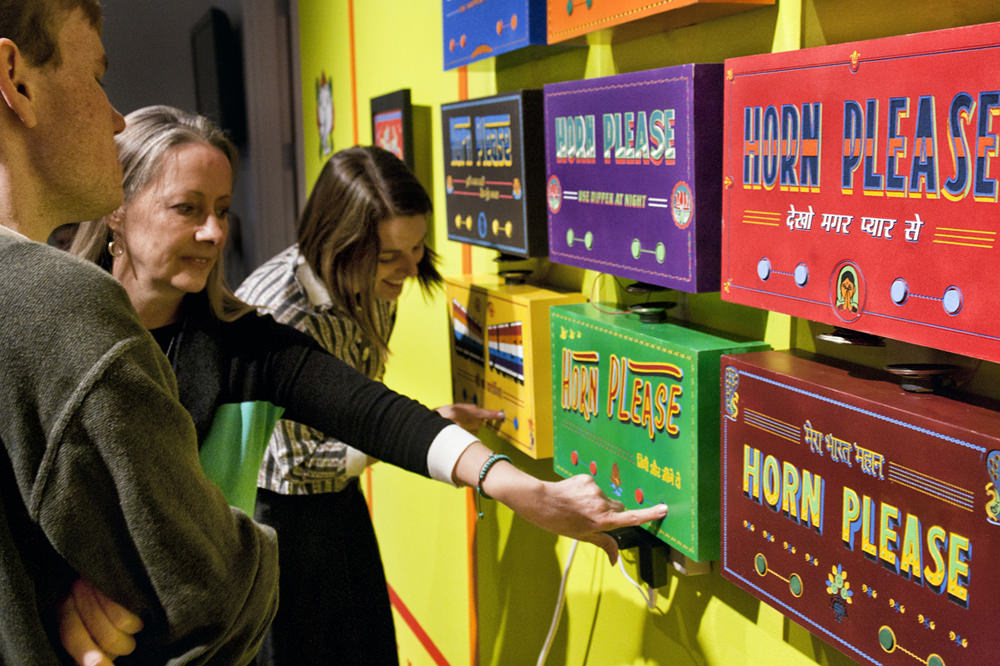
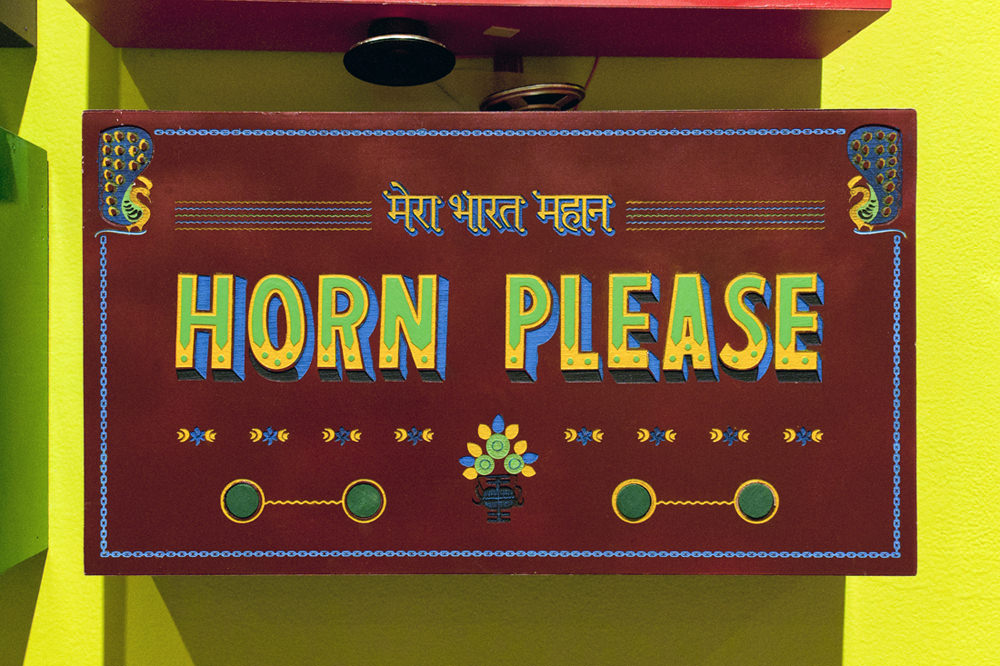

Back in March, the National revealed the cover art for its new LP, Trouble Will Find Me, a black and white image showing the top of a woman's head inside some kind of mirror system. That image is actually a scene from an installation staged at RISD in 2003 by the artist Bohyun Yoon. The installation, called Fragmentation, featured a man and woman lying nude with four mirror panels spread evenly from their ankles to head. By presenting "depersonalized" human bodies Yoon intended to draw a parallel between modern science and the consequences of plastic surgery on the human form.
The National's sixth album, Trouble Will Find Me, will be released by 4AD on May 20, and is currently streaming on iTunes. 

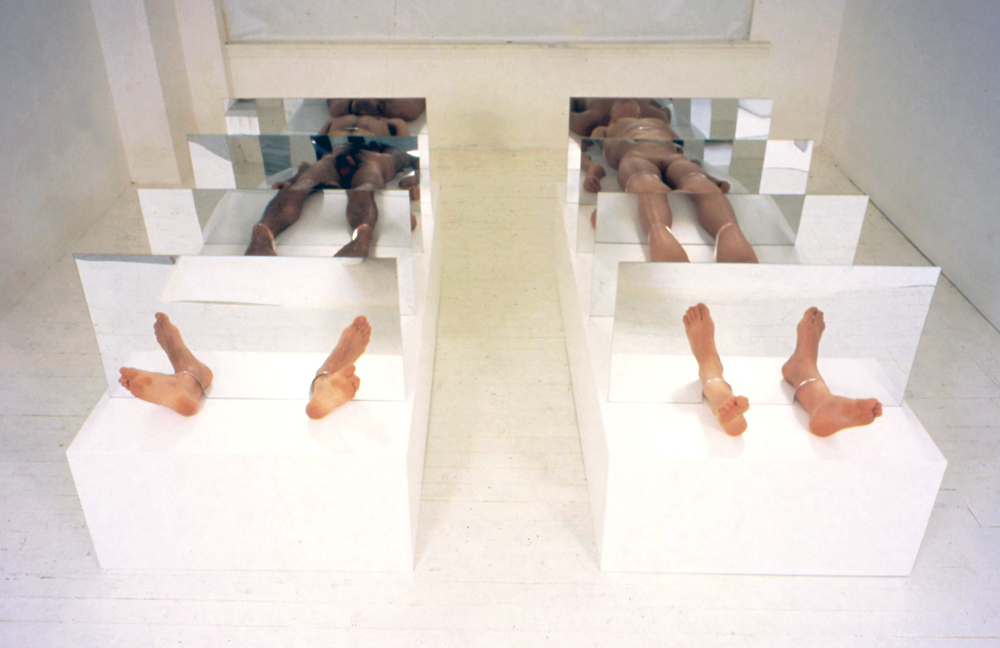
In 2013, there's both a FLAG and a Black Flag touring and playing Black Flag songs—we won't get into who's putting on the better show. But it was FLAG, featuring former Black Flag members Keith Morris, Chuck Dukowski, Bill Stevenson, and Dez Cadena (as well as Descendents guitarist Stephen Egerton), that returned to the scene of the band's first ever gig on January 27, 1979, the Moose Lodge #1873 in Redondo Beach, CA for a semi-secret show. FLAG blazed through a 40-minute set at the secret gig, and just this week, lucky for us, professionally shot and edited footage of the show has hit the Internet. In the fight for the legacy of the iconic punk act, FLAG certainly won this battle, if not the war.
With the new Daft Punk album, Random Access Memories, coming May 21 and streaming today, the electronic music duo couldn't have picked a better time to team up with their producer, the father of disco, Girogio Moroder, and fashion photographer Heidi Slimane for a sleek black and white photo shoot.
View the entire shoot on Dazed.



Miami-via-NYC group Lansing-Dreiden released a trio of well-regarded and influential long-players in the aughties, all refining an original blend of '80s synthpop and galactic space rock. But L-D isn't a typical band—in fact, it calls itself a "multimedia company" and has created visual art, graphic design, installations, and a free literary journal, Death Notice, all under the L-D name. Famously, Lansing-Dreiden featured a band in its video that was not Lansing-Dreiden. This year, the Mexican Summer label reissues three Lansing-Dreiden albums on vinyl, so we thought we'd check in with the directors of the multimedia company and see if we could find out more.

"iii"
What was Lansing-Dreiden all about? It was a "collective" and also made up of visual artists, right?
We refer to Lansing-Dreiden as a company instead of a collective. Collective implies a group of artists working together on a single project whereas a company has a mission and aesthetic that must be maintained regardless of who the members are. Some members were visual artists and some were musicians, some both, but the company was set up in a way where everyone could take part in all of the decisions since they were ultimately meant to reflect the company itself and not any individual.

"SmallM4"
And then it became more about art than music? What kind of art?
It has never been an either/or situation. The entire body of work we make all comes from the same place. Our favorite medium has been misinformation.
What's the connection with Violens?
Apparently one of Lansing-Dreiden's members is part of a guitar pop group named Violens. We have never listened to it.

Why are the L-D albums being reissued? I always thought they should have gotten a bit more attention.
We appreciate that. They are being reissued because the label asked us if we wanted to have the records printed on vinyl, and we did. Over the years, the number of people we've met that found the work interesting in some way have far outnumbered the ones that have initially dismissed it. These re-releases are for them.

Can you tell us about the album packaging design?
It is pretty minimal, just black and white. A double-matte coat with silver foil stamp logo and song names on the back. Three releases are being reissued on 12". Each record cover is a more minimal spin on its original packaging.

L-D has been fairly media shy, but Violens has done interviews. Is that about creating a mystique or just more about time management?
Lansing-Dreiden has never really been media shy, we answer most questions. The press have accused us of using our anonymity as a gimmick—perhaps that's laziness on their part? The point of Lansing-Dreiden was to produce works in various mediums that were thematically and aesthetically in harmony, following a set of rules. We chose anonymity because we wanted the audience to relate to the work on its own terms, without needing to have a media personality to refer to.
For more Lansing-Dreiden, visit lansing-dreiden.com
